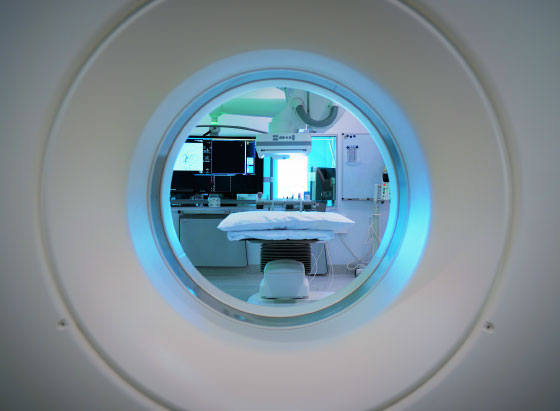WHAT IS NEPHROSTOMY?
A nephrostomy is a procedure to drain urine from your kidney using a catheter (tube).
WHY WOULD MY DOCTOR REFER ME TO HAVE THIS PROCEDURE?
You may need a nephrostomy tube when something is blocking your normal flow of urine from your kidney to your bladder. If your urine gets blocked, it will stay in your kidney and cause damage to it. A nephrostomy tube is put in to drain the urine directly from your kidney.

Wondering If You Qualify
for NEPHROSTOMY?
How do I prepare for the procedure?
Apart from fasting for 6 hours before the procedure, there is no specific preparation for a nephrostomy. However, it is very important to tell your doctor about:
- blood thinning medication you are taking that can make you bleed (e.g., warfarin);
- any allergies to medication or contrast medium (‘X-ray dye’).
- any symptoms of infection (e.g., fever, night sweats).
- any history of kidney disease.
- previous excessive bleeding from surgery, dental work or injury indicating that you may have a problem with your blood clotting in the normal way; or
- any problems you may have lying on your stomach or side (e.g., having a colostomy); or
- previous kidney or bladder surgery.
You are advised to bring any X-rays, CT scans, ultrasounds, or MRI scans to the procedure. This information helps plan the procedure and will help medical staff prevent complications.
What happens during the procedure
On arrival, an intravenous cannula or ‘drip’ will be inserted in your hand or arm to insert sedation and pain relief. You will lie on the operating table on your stomach or on your side for this procedure.
The interventional radiologist will choose the position for the nephrostomy and inject the local anaesthetic. The interventional radiologist will then use imaging to guide a very thin needle though the skin to the correct position. The position will be confirmed with an injection of contrast medium. If there is any concern of infection, a specimen of urine will be sent for analysis.
Once the position is confirmed, a wire is placed through the needle and the needle is removed. The nephrostomy tube is inserted over the wire. The wire is removed, and the tube is ‘locked’ in position. The final position is confirmed with a second injection of contrast medium.
The nephrostomy is then fixed to the skin surface by a combination of dressings, plastic clips and/or stitches. Finally, a drainage bag is connected to the nephrostomy to collect the urine and the procedure is finished.
Once the reason for the nephrostomy has been treated, the nephrostomy tube can be removed by medical or nursing staff without further intervention. Sometimes, imaging is used to guide the removal.
If you require the nephrostomy tube for a longer time, the nephrostomy tube will need to be exchanged periodically. This is similar, but less involved, than the original insertion and can be carried out as a day procedure. Your referring doctor or the hospital where you are having the procedure carried out will need to give you information about the care required for a long-term nephrostomy.
Once the sterile preparation has been completed, it takes approximately 30 minutes to insert a nephrostomy. The length of the procedure can vary considerably, depending on each patient’s internal body structure and the reason for the nephrostomy.

What is the recovery
normally like?
After the procedure, you may experience some pain and bruising at the site where the needle, wire and tubes are inserted. Your urine may also be blood stained. The bruising and blood-stained urine usually clears in 1–2 days. If simple pain relief is not working or you feel that the blood staining is getting worse, you should immediately return to where you had the procedure carried out or to your referring doctor to ensure there are no complications developing, such as infection.
You will be required to stay overnight after the procedure.
What are the risks?
Inserting a nephrostomy is a relatively safe procedure and the risk of serious complication is rare.
However, there are some risks, which include:
- severe bleeding (haemorrhage): 1–3%
- tube dislodgement: 1%
- tube blockage: 1%;
- serious infection: 1%;
- damage to adjacent structures: rare;
- vascular injury requiring removal of the affected kidney or embolisation 1% – 3.6%;
- death due to haemorrhage: less than 0.2%
- allergic reaction to contrast injection – severe reactions occur in less than 1 in every 1000 patients
What are the benefits?
A nephrostomy can help maintain kidney function and protect the kidney from damage and infection. A nephrostomy can also help to diagnose an underlying problem, because the injecting of contrast medium and using ultrasound and/or X-rays to image the ureter allows any abnormalities to be seen. A nephrostomy also allows access to treat any underlying problem. This may be carried out at the same time or at a later date.
When can I expect the results of my procedure?
Usually, the success of the procedure will be virtually immediately after the insertion.
Find a Doctor
Our Doctor Finder is a comprehensive database of interventional radiologists practicing in Australasia.
Use the search fields to search based on geographic location or by area of practice.
